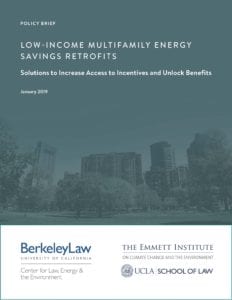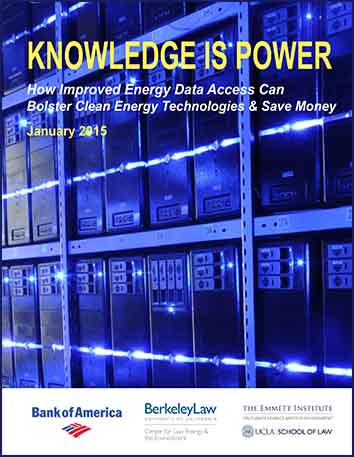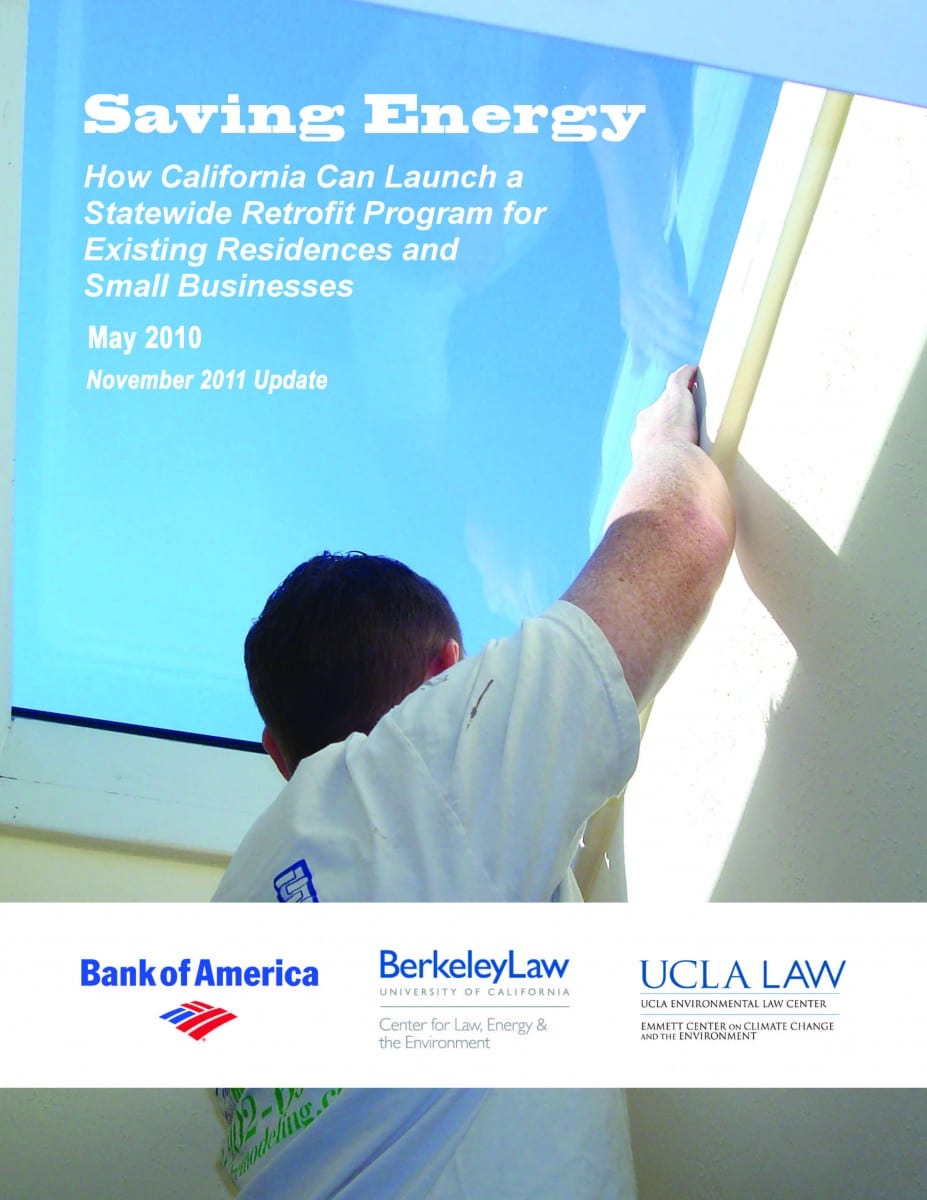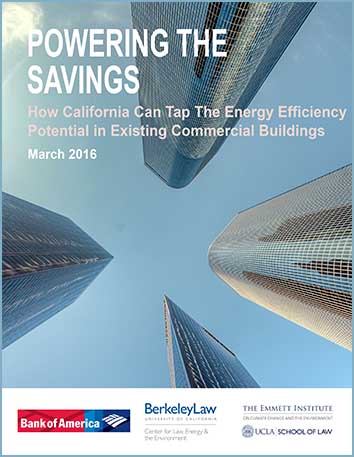Heating, cooling and energy use in buildings constitute some of the greatest sources of emissions worldwide, and even two buildings of similar sizes and neighborhoods can often have significant variations in energy intensity. Our work on energy efficiency focuses on law and policy solutions, including ways to boost financing for improvements in building energy consumption and expand access to the effective use of data to reduce energy usage.
June 2019
Low Income, High Efficiency: Policies to Expand Low Income Multifamily Energy Savings Retrofits
Improving the energy performance of existing buildings will be key to achieving California’s efficiency and greenhouse gas emission goals. But owners and residents of low-income, multifamily buildings face some of the greatest obstacles, including difficult access to capital, complex financing arrangements, competing renovation needs, and a split incentive problem that limits owners’ financial interest in upgrades that primarily reduce residents’ utility bills.
To address these challenges, UC Berkeley and UCLA Schools of Law convened two stakeholder groups to identify policy solutions to address key barriers, increase access to energy efficiency incentives, and unlock environmental, financial, and quality-of-life benefits for owners and residents alike. The law schools are now releasing a policy report, Low Income, High Efficiency that details the solutions developed in these convenings.
January 2019
Policy Brief: Low-Income Multifamily Energy Savings Retrofits: Solutions to Increase Access to Incentives and Unlock Benefits
 Improving the energy performance of existing buildings will be key to achieving California’s efficiency and greenhouse gas emission goals. But owners of low-income, multifamily buildings face some of the greatest obstacles, including difficult access to capital, complex financing arrangements, and competing renovation needs. While California’s energy regulators and electric utilities fund and operate a number of incentive and rebate programs, structural barriers have hampered progress, including strict income qualification criteria, energy data opacity, and the complexity of combining multiple incentives into one project.
Improving the energy performance of existing buildings will be key to achieving California’s efficiency and greenhouse gas emission goals. But owners of low-income, multifamily buildings face some of the greatest obstacles, including difficult access to capital, complex financing arrangements, and competing renovation needs. While California’s energy regulators and electric utilities fund and operate a number of incentive and rebate programs, structural barriers have hampered progress, including strict income qualification criteria, energy data opacity, and the complexity of combining multiple incentives into one project.
To address these challenges, UC Berkeley and UCLA Schools of Law are issuing a new policy brief based on two stakeholder convenings that identified policy solutions to address key barriers, increase access to energy efficiency incentives, and unlock environmental, financial, and quality-of-life benefits for owners and residents alike.
March 2016
Powering the Savings: How California Can Tap the Energy Efficiency Potential in Existing Commercial Buildings
Making existing buildings more energy efficient is one of the most cost-effective ways to reduce emissions. Fixes like improved lighting through LED fixtures and more efficient heating, ventilation and air conditioning can yield returns relatively quickly, despite higher upfront costs. Yet California’s energy efficiency efforts to date have not kept pace with increasing demand, primarily because they rely largely on voluntary, consumer-financed programs.
Key recommendations: aggressive utility pilot projects using advanced technologies that can measuremeter the energy saved due to specific retrofit measures; state programs that can rely on these methods to offer pay-for-performance efficiency incentives that can encourage large-scale, capital market investment.
Also see our webinar in which we discuss these recommendations.
January 2015
Knowledge Is Power: How Improved Energy Data Access Can Bolster Clean Energy Technologies & Save Money
 Greater access to energy information could help customers save money by improving their energy efficiency, while clean technology companies, including renewable energy and energy storage developers, smart grid software and hardware purveyors, and electric vehicle automakers could use aggregated, anonymous utility and customer group data to improve their services and boost market share.
Greater access to energy information could help customers save money by improving their energy efficiency, while clean technology companies, including renewable energy and energy storage developers, smart grid software and hardware purveyors, and electric vehicle automakers could use aggregated, anonymous utility and customer group data to improve their services and boost market share.
Key policy recommendations: Cost recovery mechanisms for utilities to collect and share anonymized energy and market data and historic building energy audits, development and maintenance of secure energy data centers, and establishment of customers’ right to improved access to their usage data in an easily organized, standardized format.
May 2010
Saving Energy: How California Can Launch a Statewide Retrofit Program for Existing Residences and Small Businesses
Many of California’s 13 million residences and  existing buildings could achieve significant energy conservation and greenhouse gas emission reductions through retrofitting, including adopting low-tech solutions such as “cool roofs,” improved heating and cooling systems, and basic insulation.
existing buildings could achieve significant energy conservation and greenhouse gas emission reductions through retrofitting, including adopting low-tech solutions such as “cool roofs,” improved heating and cooling systems, and basic insulation.
Key policy recommendations: Expanded support of retrofit financing programs, development of retrofit workforce licensing standards, enhanced mapping of housing stock and climate zones, and statewide marketing campaign to promote retrofits.

